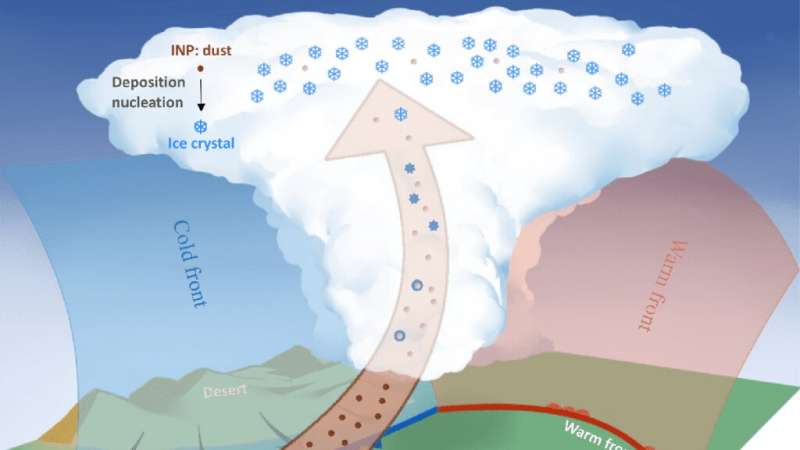Phys.org March 14, 2023
Researchers in China examined dust-infused baroclinic storm (DIBS) over East Asia in May 2017 to study the dust effects on cirrus clouds. The data indicated that the 2017 storm produced extremely high ice particle concentrations of 1 to 10 particles per cubic centimeter, with particle sizes in the range of 10 to 30 micrometers. They found that the more sophisticated parameterization matched cloud observations more closely than the simple model: The new, more complex model yielded ice particle concentrations that were 10 to 100 times higher and particle sizes that were 2 to 3 times smaller. According to the researchers these findings indicate that ice crystals in DIBS are formed through heterogeneous nucleation of dust particles. They proposed a conceptual framework to explain the dust-cloud interactions in DIBS. This study confirms the significant dust effects on cirrus clouds in DIBS and highlights the importance of using aerosol-aware ice nucleation parameterizations in modeling cirrus clouds when the dust is present. According to the resesearchers the findings provide a mechanism of cirrus cloud formation in DIBS that should be incorporated into future climate models…read more. TECHNICAL ARTICLE
